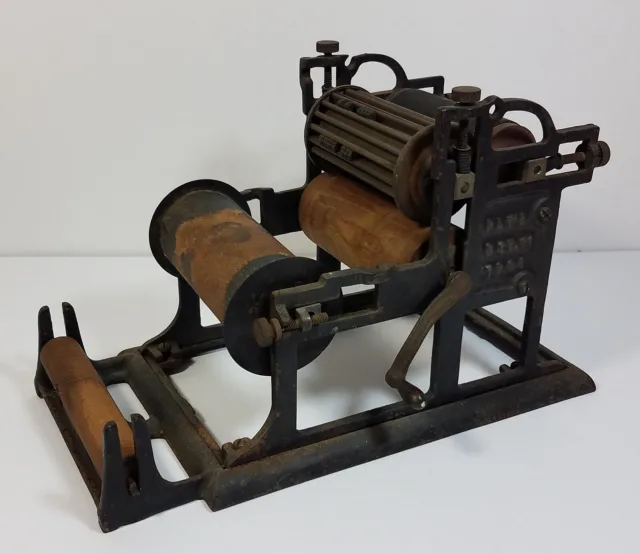From The Wall Street Journal:
A medley of games, riddles, rhymes and number problems, “Lewis Carroll’s Guide for Insomniacs” is the perfect companion for the wee hours when sleep won’t come. Adorned with a sprightly new introduction by Gyles Brandreth, the British politician, Carroll enthusiast and European Monopoly champion, the little volume is a reissue of the 1979 compilation “Lewis Carroll’s Bedside Book.” It features the creator of “Alice in Wonderland” (1865) the way his many “child-friends” knew him, as an infinitely resourceful inventor of new entertainments, including an early form of Scrabble and a version of croquet that you can play in your head.
The author himself would have, I fear, objected to the new title. Charles Lutwidge Dodgson (Lewis Carroll’s name in real life) was not, you see, an insomniac. Far from it. A long-time lecturer in mathematics at Christ Church College in Oxford, he actually liked doing math problems while lying in bed. Many of these he gathered in a book he called “Pillow-Problems Thought Out During Sleepless Nights” (1893), a title he soon regretted. For the second edition, he replaced “sleepless nights” with “wakeful hours” and added a new preface, insisting that “I have never suffered from ‘insomnia.’ ” If he was awake at night, it was because he had chosen to be.
Always keep yourself occupied, was Deacon Dodgson’s primary maxim, and he seems to have adhered to it the way only a clergyman can—religiously. Dodgson’s mind was, it seems, in constant overdrive. He was a mathematician, a writer and a photographer, the author of tomes on Euclid and symbolic logic as well as pamphlets proposing new rules for lawn tennis or postal money orders. No wonder that he was especially proud of having invented the “nyctograph,” a tablet with cut-out squares that allowed him to write in bed, using a specially developed alphabet of dots, without having to get up to light a candle.
In his “Pillow-Problems,” Dodgson demanded similar dedication from his readers. But it might not be everyone’s idea of fun to while away the night with stumpers like the following: “How many shapes are there for Triangles which have all their angles aliquot parts of 360°?” The short answer: 10 shapes (the long answer takes up two full pages of print). Reviewing Dodgson’s collection, the Spectator suggested that frustrated nonsleepers try something easier to calm themselves down, such as imagining “a new scheme for hanging the pictures in the National Gallery.”
By contrast, “Lewis Carroll’s Guide” is aimed at the average night owl, not the hopped-up math genius. Instead of trigonometry, it offers simpler fare: “Place twenty-four pigs in four sties so that, as you go round and round, you may always find the number in each sty nearer to ten than the number in the last.” Fans of Scrabble might guess what bird has the letters “gp” as its center. (Hint: It shows up in the title of a Rossini opera.) And they will derive much pleasure from Dodgson’s doublets, which ask you to transform one word into another through a chain of intermediates in which only one letter may be changed. A delightfully British example: “Make TEA HOT” (my solution: TEA pea pet pot HOT). Another wonderful sequence, intended to get us from APE to MAN, might reveal Dodgson’s own latent doubts about Darwinism: “are ere err ear mar.”
Sometimes no amount of nightly game-playing can keep away thoughts you don’t want to think, ghosts who drop in for a visit. Stay calm, the writer recommends: “Retain the normal courtesies of civilized society.” The book includes instructions on how to project some ghosts of your own right onto your bedroom wall: Hold your hands next to a lamp, twist your fingers this way and that, and you get your very own shadowy Cheshire Cat or March Hare. If you really must sleep, treat your stomach right. Consume no “lobster-sauce” (guaranteed to give you a restless night, of the wrong kind), and if you feel you need a drink, try the “Capital ‘Nightcap’ ”: Mix a half-pint of strong ale, a wineglass of brandy and four lumps of sugar flavored with essence of cloves. Stir and drink hot.
Link to the rest at The Wall Street Journal
Once again, the publisher of a book, Notting Hill Editions (distributed by Random House) in the case of the Lewis Carroll book reviewed above, misses the opportunity to sell a great many copies to Wall Street Journal readers, who likely have more disposable personal income to spend on books and other non-essential items than the readers of any other large-circulation periodical in the U.S.
Are the traditional publishers unable to respond to great publicity/exposure in a timely manner? What makes a book’s preordained release date unalterable, immutable and invariable?
(Note to regular visitors to TPV: PG is limiting himself to blowing off steam about a particular tradpub pet peeve to a set number of instances during a given period of time. If you perceive this as a very ambiguous description of a limit, you would be correct.)

PG, a “set number” can refer to a percentage. So, of course, the count would necessarily vary – even idiots do take time off on occasion.